 W
WEdmé François Chauvot de Beauchêne, was a French physician, surgeon and anatomist. He was Chief of l'hopital Saint-Antoine Paris, the Deputy Chief of Anatomical Works of the Faculté de Médecine de Paris. He was a member of the Société Anatomique de Paris and a Member of l'Academie de Médecine d'Île-de-France as well being the personal physician of Louis XVIII and the surgeon of Charles X. He is buried in Père-Lachaise Cemetery.
 W
WPierre Augustin Béclard was a French anatomist and surgeon who was a native of Angers. He was the father of physiologist Jules-Auguste Béclard (1817-1887).
 W
WMarie François Xavier Bichat was a French anatomist and pathologist, known as the father of modern histology. Although he worked without a microscope, Bichat distinguished 21 types of elementary tissues from which the organs of the human body are composed. He was also "the first to propose that tissue is a central element in human anatomy, and he considered organs as collections of often disparate tissues, rather than as entities in themselves".
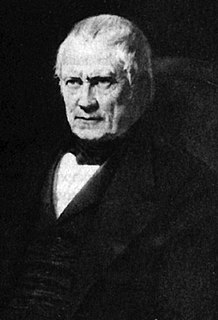 W
WHenri Marie Ducrotay de Blainville was a French zoologist and anatomist.
 W
WAmé Bourdon was a French physician and anatomist.
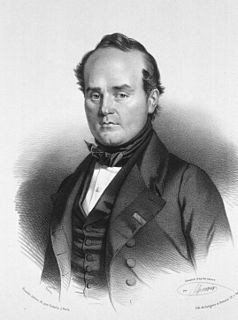 W
WJean-Baptiste Marc Bourgery was a French physician and anatomist who was a native of Orléans. Within 20 years, along with the artist Nicolas Henri Jacob, he created the comprehensive anatomy textbook Traité complet de l’anatomie de l’homme.
 W
WGilbert Breschet was a French anatomist born in Clermont-Ferrand.
 W
WPierre Paul Broca was a French physician, anatomist and anthropologist. He is best known for his research on Broca's area, a region of the frontal lobe that is named after him. Broca's area is involved with language. His work revealed that the brains of patients suffering from aphasia contained lesions in a particular part of the cortex, in the left frontal region. This was the first anatomical proof of localization of brain function. Broca's work also contributed to the development of physical anthropology, advancing the science of anthropometry.
 W
WFrançois Chaussier was a French anatomist who was a native of Dijon. His name is associated with the Prix Chaussier.
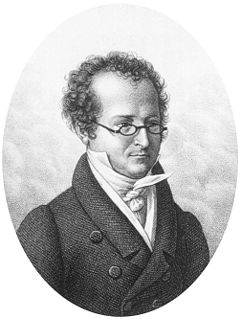 W
WHippolyte Cloquet was a French physician and anatomist who was a native of Paris. He was the brother of surgeon Jules Germain Cloquet (1790–1883), and father to Ernest Cloquet (1818–1855), who was a personal physician to Mohammad Shah Qajar of Persia.
 W
WJules Germain Cloquet was a French physician and surgeon who was born and practiced medicine in Paris. His older brother, Hippolyte Cloquet (1787-1840) and his younger nephew Ernest Cloquet (1818-1855) were also physicians. In 1821 Jules Cloquet became one of the earliest members elected to the Académie Nationale de Médecine in Paris. In 1836, he was elected Honorary Fellow of the Royal College of Surgeons in Ireland.
 W
WJean Cruveilhier was a French anatomist and pathologist.
 W
WCharles-Pierre Denonvilliers was a French surgeon who was a native of Paris.
 W
WAndré du Laurens, was a French physician.
 W
WJacques Dubois was a French anatomist. Dubois was the first to describe venous valves, although their function was later discovered by William Harvey. He was the brother of Franciscus Sylvius Ambianus, professor of humanities at the Collège de Tournai, Paris.
 W
WBaron Guillaume Dupuytren was a French anatomist and military surgeon. Although he gained much esteem for treating Napoleon Bonaparte's hemorrhoids, he is best known today for his description of Dupuytren's contracture which is named after him and which he first operated on in 1831 and published in The Lancet in 1834.
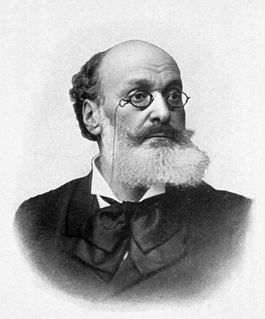 W
WMathias-Marie Duval was a French professor of anatomy and histology born in Grasse. He was the son of botanist Joseph Duval-Jouve (1810–1883).
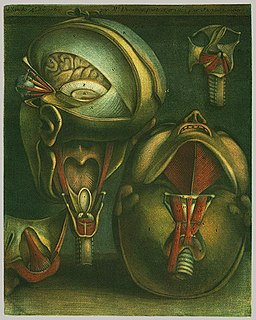 W
WGuichard Joseph Duverney or Joseph-Guichard Du Verney was a French anatomist.
 W
WCharles Estienne, known as Carolus Stephanus in Latin and Charles Stephens in English, was an early exponent of the science of anatomy in France. Charles was a younger brother of Robert Estienne I, the famous printer, and son to Henri, who Latinized the family name as Stephanus. He married Geneviève de Berly.
 W
WAntoine Ferrein was a French anatomist who was a native of Frespech, which today is a commune in the arrondissement of Villeneuve-sur-Lot. He was a professor at the Collège Royal in Paris, and in 1742 became a member of the Académie des sciences.
 W
WHonoré Fragonard was a French anatomist, now remembered primarily for his remarkable collection of écorchés in the Musée Fragonard d'Alfort.
 W
WJacques Fabien Gautier d'Agoty (1716–1785) was a French anatomist, painter and printmaker.
 W
WLouis Gayant was a French surgeon and anatomist. He was one of the founding members of the French Academy of Sciences.
 W
WPierre Nicolas Gerdy was a French physician who was a native of Loches-sur-Ource.
 W
WLouis Pierre Gratiolet was a French anatomist and zoologist who was a native of Sainte-Foy-la-Grande, Gironde. He succeeded Isidore Geoffroy Saint-Hilaire (1805-1861) as professor of zoology to the Faculty of Sciences at the University of Paris.
 W
WJean-François Jarjavay was a French anatomist and surgeon who was a native of Savignac-les-Églises in the department of Dordogne. He practised medicine at the Hôpital Lourcine and Hôpital Beaujon in Paris, and in 1859 became a professor of anatomy.
 W
WFélix Joseph Henri de Lacaze-Duthiers was a French biologist, anatomist and zoologist born in Montpezat in the department of Lot-et-Garonne. He was a leading authority in the field of malacology.
 W
WAndré Latarjet (1877–1947) was a French physician. In 1933, at the 2nd International AIMS (FIMS) Congress, he was elected President of the organization which would become the International Federation of Sports Medicine, the World agency for sports medicine.
 W
WThomas Lauth was a French anatomist. He was the father of anatomist Ernest Alexandre Lauth (1803–1837).
 W
WClaude-Nicolas Le Cat was a French surgeon.
 W
WJoseph Lieutaud was a French physician.
 W
WFrançois Achille Longet was a French anatomist and physiologist who was a native of Saint Germain-en-Laye, Yvelines.
 W
WLouis-Charles Malassez was a French anatomist and histologist born in Nevers, department of Nièvre.
 W
WFrançois Pourfour du Petit was a French anatomist, ophthalmologist and surgeon who was a native of Paris.
 W
WJean-Louis Petit was a French surgeon and the inventor of a screw-type tourniquet. He was first enthusiastic about anatomy and received a master's certificate in surgery in Paris in 1700. He became a member of the French Royal Academy of Sciences in 1715 and was named director of the French Royal Academy of Surgery by the king when it was created in 1731. He acquired great notoriety because of his skill and experience, thanks to his case reports of hemorrhage, lacrimal fistula and operation on the frenum, for his treatise on bone diseases and especially for his general treatise on surgical operations, on which he worked for 12 years and which was finished after his death by François-Dominique Lesné (1722—1800).
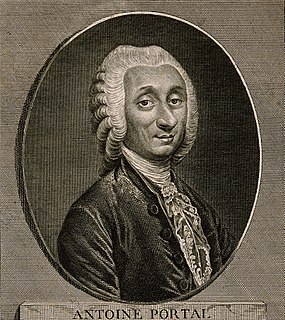 W
WBaron Antoine Portal was a French anatomist, doctor, medical historian and founding president of the Académie Nationale de Médecine.
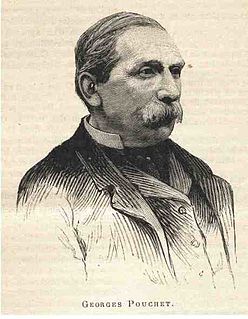 W
WCharles Henri Georges Pouchet was a French naturalist and anatomist.
 W
WLouis-Antoine Ranvier was a French physician, pathologist, anatomist and histologist, who discovered the nodes of Ranvier, regularly spaced discontinuities of the myelin sheath, occurring at varying intervals along the length of a nerve fiber.
 W
WPaul Marie Louis Pierre Richer was a French anatomist, physiologist, sculptor and anatomical artist who was a native of Chartres. He was a professor of artistic anatomy at the École nationale supérieure des Beaux-Arts in Paris, as well as a member of the Académie Nationale de Médecine (1898).
 W
WJean Riolan was a French anatomist who was an influential member of the Medical Faculty of Paris. His father, Jean Riolan (1539–1605) was also a noted French anatomist. Riolan was the personal physician to Marie de' Medici (1553–1642) for all his life.
 W
WCharles-Philippe Robin was a French anatomist, biologist, and histologist born in Jasseron, département Ain.
 W
WArmand Sabatier was a French zoologist known for his studies of comparative anatomy of animals, and for his work in photography, discovering and publishing in 1860 the Sabattier effect, also known as pseudo-solarisation.
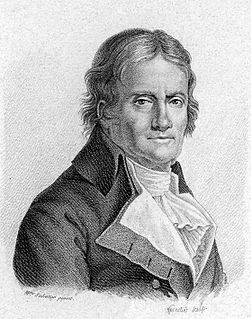 W
WRaphaël Bienvenu Sabatier was a French anatomist and surgeon born in Paris.
 W
WMarie Philibert Constant Sappey was a French anatomist born in Cernon, near the city of Bourg-en-Bresse.
 W
WProf Jean-Joseph Sue FRS FRSE was a French surgeon and anatomist.
 W
WLeo Testut was a French physician and anatomist, born in Saint-Avit-Sénieur, Dordogne.
 W
WAlfred-Armand-Louis-Marie Velpeau was a French anatomist and surgeon.
 W
WFélix Vicq d'Azyr was a French physician and anatomist, the originator of comparative anatomy and discoverer of the theory of homology in biology.
 W
WRaymond Vieussens was a French anatomist from Le Vigan. There is uncertainty regarding the exact year of Vieussens birth, with some sources placing it as late as 1641.